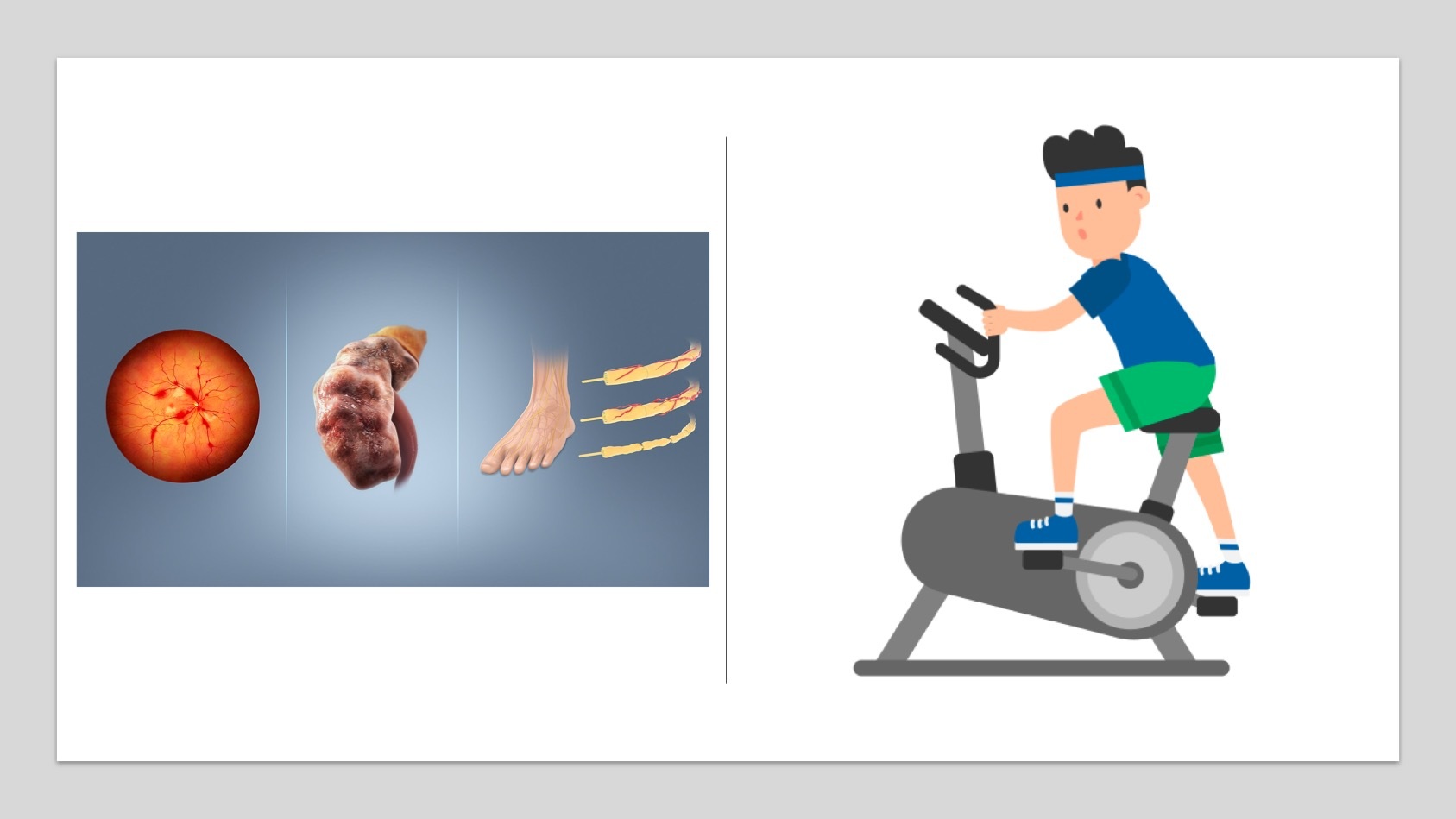 Advice for Professionals
Advice for Professionals

Exercise and microvascular complications.
In most people provided exercise is started at a low intensity and increased gradually then no harm will be done.
However there are some conditions where caution is required or action needs to be taken prior to starting exercise. The tables below summaries these in relation to microvascular diseases.
| Complications | Advice |
Eyes diseases | |
Mild to moderate non-proliferative retinopathy |
|
Severe non-proliferative and unstable proliferative retinopathy |
|
| Vitreous haemorrhage |
|
Cataracts |
|
| Nerve diseases | |
Peripheral neuropathy |
|
| Local foot deformities |
|
| Foot ulcers/ amputations |
|
| Autonomic neuropathy |
|
| Kidney disease | |
| Microalbuminuria |
|
| Overt nephropathy |
|
| End-stage renal disease |
|
References
- Balducci S, Iacobellis G, Parisi L, et al. Exercise training can modify the natural history of diabetic peripheral neuropathy. J Diabetes Complications 2006;20:216–22 - to go to this paper click here.
- Lemaster JW, Mueller MJ, Reiber GE, Mehr DR, Madsen RW, Conn VS. Effect of weight-bearing activity on foot ulcer incidence in people with diabetic peripheral neuropathy: feet first randomized controlled trial. Phys Ther 2008;88:1385–1398- to go to this paper click here.
- Colberg SR, Swain DP, Vinik AI. Use of heart rate reserve and rating of perceived exertion to prescribe exercise intensity in diabetic autonomic neuropathy. Diabetes Care 2003;26:986–99 - to go to this paper click here.
- Robinson-Cohen C, Littman AJ, Duncan GE, et al. Physical activity and change in estimated GFR among persons with CKD. J Am Soc Nephrol 2014;25:399–406- to go to this paper click here.
- Waden J, Tikkanen HK, Forsblom C, et al.; FinnDiane Study Group. Leisure-time physical activity and development and progression of diabetic nephropathy in type1 diabetes: the Finn Diane Study. Diabetologia 2015;58:929–936 169 -to go to this paper click here.
- Koh KP, Fassett RG, Sharman JE, Coombes JS, Williams AD. Effect of intradialytic versus home-based aerobic exercise training on physical function and vascular parameters in hemodialysis patients: a randomized pilot study. Am J Kidney Dis 2010;55:88–9 - to go to this paper click here.
